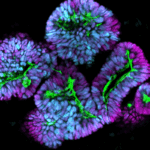9 Signs That You May Be Unknowingly Living With High Functioning Depression

Life’s challenges often demand that we push forward, no matter what’s happening beneath the surface. For some, this resilience becomes a mask—a way to appear capable and composed while quietly battling an unseen struggle. High-functioning depression, a lesser-known and often misunderstood condition, thrives in this hidden space.
Unlike the stereotypical image of depression, this form doesn’t always render someone unable to work or interact with others. Instead, it quietly chips away at their emotional and mental well-being, making the signs easy to overlook—even by the individuals experiencing them. Could you or someone you know be unknowingly living with this condition?
Sign 1: Persistent Feelings of Sadness or Emptiness
High-functioning depression often operates in the background, manifesting as a continuous sense of sadness or emptiness. Unlike the more acute episodes of major depressive disorder, this low mood is subtle yet unrelenting. The Mayo Clinic defines these persistent feelings as key symptoms of persistent depressive disorder (PDD), a condition that can quietly permeate daily life without drawing much attention.
Individuals with high-functioning depression might go about their routines, attend social gatherings, or even perform well professionally, yet feel an underlying disconnection from their surroundings. This emotional state often becomes normalized, making it harder for individuals to recognize they may need help.
Research published in the Journal of Affective Disorders underscores the chronic nature of this symptom, revealing that those with PDD are more likely to experience enduring sadness than individuals without the disorder. According to the DSM-5, these feelings typically persist for at least two years in adults, marking them as a defining characteristic of high-functioning depression.
This subtle yet pervasive sadness can lead individuals to believe that their emotional struggles are just “part of life,” which only delays seeking the support they need. Recognizing these feelings as more than fleeting is the first step toward breaking free from their hold.
Sign 2: Disrupted Sleep Patterns
 Image source: Shutterstock
Image source: Shutterstock
Sleep issues are one of the hallmark signs of high-functioning depression, often presenting as noticeable changes in sleep habits. This can include insomnia, where falling or staying asleep becomes a nightly challenge, or hypersomnia, marked by excessive sleepiness during the day. These disruptions are more than occasional—they occur almost daily, signaling a deeper underlying issue.
The connection between depression and sleep is complex and bidirectional. A study in the Journal of Clinical Psychiatry revealed that approximately 75% of individuals with depression experience significant sleep disturbances. This is not just about how many hours you sleep but also about the quality of that sleep. For many, even after a full night’s rest, feelings of fatigue linger, making concentration and energy during the day feel like an uphill battle.
This persistent tiredness doesn’t just affect your mood—it can disrupt your performance at work, your interactions with others, and even your sense of self-worth. If you find yourself lying awake at night or sleeping excessively yet waking up unrefreshed, it might indicate that something more significant is at play.
Addressing these sleep issues is essential to breaking the cycle of depression. Treatments like cognitive-behavioral therapy for insomnia (CBT-I) and tailored medical interventions have proven effective in improving sleep quality and alleviating depressive symptoms. Seeking professional guidance can help you reclaim restful sleep and, in turn, restore your overall well-being.
Sign 3: Unexplained Physical Pain
Does it ever feel like your body is trying to tell you something your mind can’t quite put into words? Persistent headaches, back pain, muscle aches, or even stomach troubles without a clear medical cause might be your body’s way of flagging something deeper. For many living with high-functioning depression, physical symptoms like these are surprisingly common—and frustratingly easy to overlook.
It’s not just in your head (though it kind of is). Depression and physical pain are more connected than most people realize. In fact, a study published in the Journal of Clinical Psychiatry found that nearly 69% of individuals with depression reported unexplained physical pain. This happens because the brain regions that handle mood and emotions also process pain signals, creating a complex relationship between the two. Essentially, emotional distress can amplify your sensitivity to pain or even create new symptoms, making it feel like you’re battling an invisible foe.
Maybe it’s those constant headaches that over-the-counter meds can’t seem to touch. Or perhaps it’s back pain that lingers no matter how many times you stretch or rest. If these aches keep showing up without a clear cause, they might be pointing to something beyond the physical.
Acknowledging this link is important. Ignoring these signs might lead you to treat the symptoms without addressing the root cause. So, if this sounds like your experience, take a step back and consider the possibility of high-functioning depression—it’s worth exploring with a professional who can help untangle the connection between your mind and body.
Sign 4: Lack of Joy in Previously Enjoyed Activities
Have you ever looked at something you once loved—a favorite hobby, a social event, or even your work—and felt… nothing? This loss of interest or pleasure, known as anhedonia, is a core sign of high-functioning depression. It’s not just about losing a spark; it’s about feeling disconnected from the things that used to light up your world.
Psychologist Suzanne Leckie describes this as “experiencing less pleasure in usual activities,” a hallmark of high-functioning depression. It’s a symptom that can sneak up on you, gradually dulling the joy you once found in your day-to-day life. Before you know it, the things you loved—whether it’s painting, going out with friends, or hitting the gym—feel more like obligations than sources of happiness.
This withdrawal can be isolating. When you stop finding joy in your passions, it’s easy to pull away from social interactions, which only deepens feelings of loneliness. Research in the American Journal of Psychiatry highlights anhedonia as a major indicator of depression severity, showing that early recognition and action are crucial to keeping this symptom from taking over.
The good news? Rekindling that spark is possible. Cognitive-behavioral therapy (CBT), for example, can help you challenge the negative thought patterns that keep you stuck and encourage you to re-engage with the activities you’ve sidelined. Even small steps—like scheduling time for something you used to enjoy—can make a big difference. And if this resonates with you, reaching out to a healthcare professional can be a powerful first move. Because you deserve to feel joy again.
Sign 5: Persistent Feelings of Guilt or Worry
 Image source: Shutterstock
Image source: Shutterstock
Do you ever catch yourself replaying past mistakes in your mind, holding onto them like they’re carved in stone? Or maybe you feel an almost crushing sense of responsibility, even for things that aren’t entirely in your control. These persistent feelings of guilt and worry are often a quiet hallmark of high-functioning depression.
The Mayo Clinic highlights “feelings of guilt and worries over the past” as significant signs of persistent depressive disorder. It’s a heavy burden to carry, often made worse by an internal dialogue that’s overly critical and unforgiving. Research from the Journal of Affective Disorders underscores how heightened guilt can intensify depressive symptoms, making it harder to break free from the cycle.
This guilt isn’t just about mistakes—it’s often tied to a distorted view of yourself. You might hold yourself to impossible standards, expecting perfection and chastising yourself when you fall short. This can create a mental loop of rumination, where every small misstep feels magnified and every worry clings tighter.
But you don’t have to stay stuck in this loop. Strategies like cognitive-behavioral therapy (CBT) can help you challenge those harsh inner narratives and replace them with more balanced, compassionate thoughts. Mindfulness practices, too, can work wonders, teaching you to let go of past regrets and focus on the here and now. If guilt and worry have become your constant companions, consider seeking professional guidance—it’s a step toward lightening your emotional load.
Sign 6: Increased Irritability and Anger
High-functioning depression often manifests through heightened irritability and anger, emotions that may seem disproportionate to the circumstances. Psychotherapist Annie Wright notes that if you find yourself “exploding in a way that feels disproportionate to the event,” it could be indicative of high-functioning depression.
Research published in the Journal of the American Medical Association indicates that irritability is a common symptom in individuals with depression, particularly in those who may not exhibit classic depressive symptoms.
This irritability can strain personal and professional relationships, leading to further isolation and exacerbation of depressive feelings.
If minor annoyances frequently trigger strong reactions in you, consider seeking help rather than blaming yourself.
Addressing increased irritability and anger involves therapeutic interventions such as cognitive-behavioral therapy (CBT), which helps individuals identify and modify negative thought patterns contributing to these emotions. Mindfulness practices can also aid in managing emotional responses by promoting present-moment awareness and reducing reactivity.
Sign 7: Persistent Fatigue
Do you ever feel like no matter how much sleep you get, it’s never enough? Waking up tired, pushing through the day on sheer willpower, and finding even simple tasks overwhelming—this kind of persistent fatigue can be a subtle but significant sign of high-functioning depression. It’s more than just feeling “a little worn out”; it’s a deep, lingering exhaustion that colors every part of your life.
The Mayo Clinic lists “decreased energy or fatigue” as a hallmark symptom of persistent depressive disorder. It’s a fatigue that doesn’t just weigh on your body but on your mind too, making it harder to focus, stay motivated, or find joy in the things you used to love. Research in the Journal of Affective Disorders shows that fatigue is not only common in depression but can also make recovery more challenging if left unaddressed.
This constant tiredness can feel like a vicious cycle. You’re too exhausted to engage in activities that might boost your energy, and yet, skipping those activities only makes you feel worse. Over time, this can chip away at your productivity and your ability to fully participate in life.
But here’s the good news: there are ways to manage it. Regular physical activity, even just a short walk, can do wonders for your energy levels. Pair that with a balanced diet and consistent sleep schedule, and you’re on your way to feeling a bit lighter. Cognitive-behavioral therapy (CBT) can also help, offering strategies to challenge the negative thoughts that often accompany fatigue and encouraging small, achievable actions to rebuild momentum. If this constant exhaustion feels all too familiar, consider reaching out to a healthcare professional. You don’t have to power through it alone.
Sign 8: Low Self-Esteem
 Image source: Shutterstock
Image source: Shutterstock
Do you often feel like you’re not enough, no matter how much you achieve? For many living with high-functioning depression, low self-esteem quietly lurks in the background, creating a cycle of self-doubt and self-criticism. It’s more than just having an off day—it’s a persistent feeling of inadequacy that colors how you see yourself and your place in the world.
Psychology Today recognizes “low self-esteem” as a key symptom of high-functioning depression. This inner struggle often shows up as hesitation to take on new challenges, downplaying accomplishments, or second-guessing every decision. Even when things go well, it’s hard to shake the voice in your head that says, You could’ve done better.
Research published in the Journal of Behavioral and Cognitive Psychotherapy highlights the deep link between low self-esteem and depression. Negative self-perceptions don’t just hurt your confidence—they can also trap you in a cycle of hopelessness, where it feels impossible to break free from self-criticism.
But here’s the truth: self-esteem isn’t set in stone. Cognitive-behavioral therapy (CBT) can help you reframe those distorted thoughts and replace them with more balanced, compassionate ones. Small wins, like setting achievable goals or celebrating your efforts, can also help rebuild your confidence. Surrounding yourself with people who genuinely support and uplift you can make a world of difference. If low self-worth is something you’re battling, know that it’s possible to rewrite the narrative—and you don’t have to do it alone.
Sign 9: Perception Gap Between You and Your Loved Ones
High-functioning depression often creates a disconnect between an individual’s internal experience and the perceptions of those around them. You may feel that something is wrong, but your friends and family may perceive everything as normal.
This disparity can lead to feelings of isolation and frustration, as the lack of visible symptoms makes it challenging for others to recognize the underlying struggle.
Psychologist Suzanne Leckie explains that with persistent depressive disorder (PDD), “people experience many of the same symptoms but to a lesser degree which enables them to still get out of bed in the morning and do much of what they need to do.” She adds, “This means that the depression may not be evident to others and can come as a surprise to extended family and colleagues.”
Research published in the Journal of Affective Disorders highlights that individuals with high-functioning depression often maintain daily responsibilities, making it difficult for others to detect their depressive state. This concealment can hinder timely intervention and support.
Addressing this perception gap involves open communication and self-awareness. Sharing your feelings with trusted individuals can bridge the understanding between your internal experiences and external perceptions. Additionally, seeking professional guidance can provide strategies to manage symptoms effectively and improve overall well-being.
Taking the First Steps to Healing
High-functioning depression may not always be easy to identify, but its impact is deeply felt. By recognizing the subtle signs—persistent sadness, disrupted sleep, unexplained physical pain, and more—you can take the first steps toward addressing the challenges it presents. The journey may feel overwhelming, but acknowledging the issue is a significant milestone in itself.
Remember, you don’t have to face this alone. Seeking support from loved ones, consulting mental health professionals, or even joining a community of individuals with similar experiences can provide strength and understanding. High-functioning depression is treatable, and with the right help, you can reclaim joy and meaning in your life. You are more than your struggles, and healing is always within reach.
Featured image source: Shutterstock
Loading...






